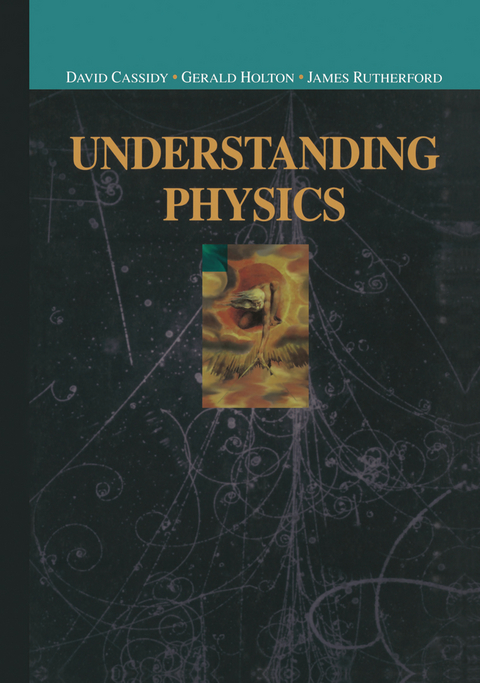
Understanding Physics
Springer-Verlag New York Inc.
978-0-387-98756-9 (ISBN)
Understanding Physics provides a thorough grounding in contemporary physics while placing physics into its social and historical context. Based in large part on the highly respected Project Physics Course developed by two of the authors, it also integrates the results of recent pedagogical research. The text thus: - teaches about the basic phenomena in the physical world and the concepts developed to explain them - shows that science is a rational human endeavor with a long and continuing tradition, involving many different cultures and people - develops facility in critical thinking, reasoned argumentation, evaluation of evidence, mathematical modeling, and ethical values The treatment emphasizes not only what we know but also how we know it, why we believe it, and what effects that knowledge has: - Why do we believe the Earth and planets revolve around the Sun? - Why do we believe that matter is made of atoms? - How do relativity theory and quantum mechanics alter our conception of Nature and in what ways do they leave the classical concepts unchanged? - What impact does the knowledge of finite energy resources have on our society? - How have applications of fundamental science (such as the steam engine, the laser, the electric generator, the transistor) affected our lives? - How does the evidence for non-scientific ideas, such as UFOs, ESP, and the like, differ from the evidence for accepted scientific results?
1. Motion Matters.- 2. Moving the Earth.- 3. Understanding Motion.- 4. Newton’s Unified Theory.- 5. Conserving Matter and Motion.- 6. The Dynamics of Heat.- 7. Heat: A Matter of Motion.- 8. Wave Motion.- 9. Einstein and Relativity Theory.- 10. Electricity and Magnetism.- 11. The Electric Age.- 12. Electromagnetic Waves.- 13. Probing the Atom.- 14. The Quantum Model of the Atom.- 15. Quantum Mechanics.- 16. Solids Matter.- 17. Probing the Nucleus.- 18. The Nucleus and Its Applications.- Illustration Credits.
From the reviews:
"Understanding Physics provides a thorough grounding in contemporary physics while placing physics into its social and historical context...develops facility in critical thinking, reasoned argumentation, evaluation of evidence, mathematical modelling, and ethical values."
--Meteorology and Atmospheric Physics
"The writing is clear and...precise...it would be possible to assemble a very interesting and exciting course using this text. The general university undergraduate needs to be acquainted with these basic ideas - and this might be just the place to start!"
--The Physicist
"If a book is required which develops the basic concepts of physics in a detailed but completely readable and always interesting way from first principles, then this could certainly be a candidate. It uses the rather outdated historical approach to each chapter’s material, but far from obscuring the important physical results, the approach as used here has been so carefully constructed that one is led to an understanding of the concepts without really noticing that one has arrived!" (Prof. F. W. Bullock, Contemporary Physics, Vol. 44 (6), 2003)
"Understanding Physics is an integrated introductory physics course written primarily for undergraduate college students … . I was much impressed by the quality of this textbook. I think that one could recommend it … as supplementary reading for undergraduate students in physics. ... Professor G. Holton, one of the three authors, is well known for his numerous contributions to the history of science and to epistemology. His influence has left a clear imprint on the style of presentation of Understanding Physics." (Freddy Binon, Physicalia, Vol. 25 (4), 2003)
"Understanding Physics provides a thorough grounding in contemporary physics while placing physics into its social and historical context. Based in large part on the highly respected Project Physics Coursedeveloped by two of the authors, it also integrates the results of recent pedagogical research. The text thus teaches the basic phenomena in the physical world and the concepts developed to explain them; … develops facility in critical thinking, reasoned argumentation, evaluation of evidence, mathematical modelling, and ethical values." (Meteorology and Atmospheric Physics, Vol. 84 (1-2), 2003)
"Basic laboratory experiments are also included in this guide that would be a valuable aid for anyone presenting this course. … The writing is clear and … precise. The presentation is generally good with many interesting photos and clear drawings. … In all cases the field is developed slowly and carefully which would be appreciated by students new to the concepts of physics. … The general university undergraduate needs to be acquainted with these basic ideas – and this might be just the place to start!" (L. Peak, The Physicist, Vol. 40 (2), 2003)
"This is a revised and updated version of
| Erscheint lt. Verlag | 10.9.2002 |
|---|---|
| Reihe/Serie | Undergraduate Texts in Contemporary Physics |
| Zusatzinfo | XXIII, 851 p. |
| Verlagsort | New York, NY |
| Sprache | englisch |
| Maße | 178 x 254 mm |
| Themenwelt | Naturwissenschaften ► Physik / Astronomie ► Allgemeines / Lexika |
| ISBN-10 | 0-387-98756-8 / 0387987568 |
| ISBN-13 | 978-0-387-98756-9 / 9780387987569 |
| Zustand | Neuware |
| Haben Sie eine Frage zum Produkt? |
aus dem Bereich


